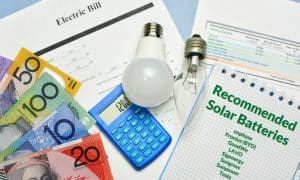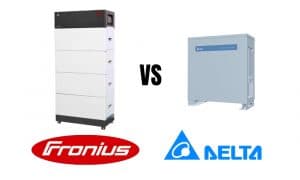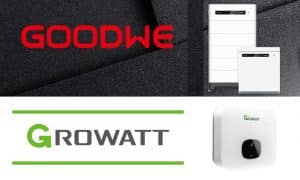On this page
In an era marked by the increasing demand for clean and sustainable energy solutions, solar power has emerged as a frontrunner in revolutionising how we generate electricity. As the adoption of solar panels becomes more mainstream, the importance of efficient energy storage solutions, like solar batteries, cannot be understated. Solar batteries play a crucial role in harnessing the sun’s power, storing excess energy, and ensuring a consistent power supply. This comprehensive guide aims to navigate the complexities of solar battery selection tailored to your unique needs.
Are you looking to save money on your electricity bills and reduce your carbon footprint? Solar energy is the perfect solution! Energy Matters can help you get up to 3 FREE quotes from pre-qualified and vetted solar firms in your area.
Energy Matters has been a leader in the renewable energy industry since 2005 and has helped over 40,000 Australian households in their journey to energy independence. With Energy Matters, you can be sure you’re getting the best possible deal on solar energy. We only work with reputable solar firms with a proven track record of delivering high-quality solar systems.
How a solar battery works
Solar batteries, also known as solar energy storage systems or solar battery storage, are devices designed to store excess energy generated by solar panels during periods of high sunlight. This stored energy can be utilised during cloudy days, nighttime, or when energy consumption exceeds the solar panel’s immediate output. Solar batteries bridge the gap between energy generation and consumption, enabling homeowners and businesses to optimise their solar investments.

- Solar panels generate electricity during the day.
- The solar inverter converts the electricity into DC (direct current).
- The DC electricity is then stored in the solar battery.
- At night, or when the solar panels are not generating enough electricity, the battery can provide AC (alternating current) electricity to your home.
- The battery inverter converts the DC electricity from the battery into AC electricity that your appliances can use.
AC versus DC coupling
AC coupling and DC coupling are two different ways of connecting solar panels to batteries. In an AC-coupled system, the solar panels are connected to an inverter, which converts the DC power from the panels to AC power that the home or business can use. The inverter also charges the batteries. The solar panels are connected directly to the batteries in a DC-coupled system. A charge controller is used to regulate the flow of power between the panels and the batteries.
AC-coupled systems are generally easier to install than DC-coupled systems. They are also more common in Australia, as they are compatible with the grid-tied solar system. However, AC-coupled systems are less efficient than DC-coupled systems, as they lose some power during the conversion from DC to AC.
DC-coupled systems are more efficient than AC-coupled ones but are more complex to install. They are incompatible with the grid-tied solar system, so they are only suitable for off-grid systems.
So why install a solar battery storage?
Consider a household consuming 20 kWh of electricity per day. With a 10 kWh solar battery, the household can store excess solar energy generated during the day for consumption at night or during power outages. This can significantly reduce reliance on the grid, potentially slashing electricity bills by up to 80%.
Businesses can also reap substantial benefits from solar batteries. A commercial establishment with a 50 kWh battery can store excess solar energy to power operations during peak demand hours, reducing reliance on expensive grid electricity. This can lead to significant cost savings, improved energy efficiency, and enhanced environmental sustainability.
Here are some benefits of using solar batteries in Australia:
Save money on electricity bills
Solar batteries can help you save money on your electricity bills by storing excess solar energy during the day and using it at night or during peak demand times.
Reduce your reliance on the grid
Solar batteries can help you reduce your reliance on the grid by storing solar energy that you can use when the grid is unavailable or when electricity prices are high.
Increase your energy independence
Solar batteries can give you more energy independence by allowing you to store and use solar energy when needed.
Protect your appliances from power outages
Solar batteries can protect your appliances from power outages by providing backup power during an outage.
Feature | Solar Battery | No Solar Battery |
Energy independence | Provides backup power during grid outages | Reliant on the grid for electricity |
Cost savings | Reduces electricity bills by storing excess solar energy | Higher electricity costs due to grid dependence |
Environmental impact | Promotes clean and renewable energy | Contributes to greenhouse gas emissions from conventional power sources |
Self-reliance | Empowers households and businesses to manage their own energy needs | Subjected to grid fluctuations and outages |
Sustainability | Promotes sustainable energy practices and reduces reliance on fossil fuels | Continues to rely on non-renewable energy sources |
What to look for when buying solar battery storage?

Solar batteries are becoming increasingly popular as a way to store solar energy for use during cloudy days or at night. There are a variety of solar batteries on the market, each with its own features and benefits. To choose the best solar battery for your needs, you will need to consider the following factors:
1. Battery capacity
The battery capacity is the amount of energy the battery can store. This will determine how long the battery can power your home or business during a power outage
2. Warranty and lifespan
Solar battery warranties can range from 5 to 15 years or more. A longer warranty period indicates the manufacturer’s confidence in the battery’s durability and performance. Consider the warranty in conjunction with the expected lifespan of the battery.
3. Charge/discharge cycles
The number of times a battery can be charged and discharged before it starts to lose its capacity is known as the charge/discharge cycle. Solar batteries typically have a lifespan of 4,000-6,000 cycles.
4. Depth of Discharge (DoD)
DoD refers to the amount of a battery’s capacity that can be used before recharging. Deeper DoD levels offer more usable energy but might shorten the battery’s lifespan. Staying balanced based on your energy needs and the battery’s longevity is essential.
5. Efficiency
Battery efficiency determines how much energy is lost during the charging and discharging. Higher efficiency batteries waste less energy as heat and perform better over time. Look for batteries with efficiency ratings close to 90% or higher.
6. Peak power output
The peak power output is the maximum power the battery can deliver simultaneously. This is important if you need to power large appliances or devices during a power outage.
7. Round-trip efficiency
The round-trip efficiency is the percentage of energy stored in the battery that can be retrieved. Solar batteries typically have a round-trip efficiency of 80-90%.
8. Ambient working temperature
Solar batteries are designed to work in a specific range of ambient temperatures. You will need to choose a battery that is designed to work in the climate where you live.
9. Brand and warranty
Choosing a solar battery storage from a reputable brand with a good warranty is important. This will protect you in case the battery fails.
10. Smart features and remote monitoring
Some solar batteries have smart features like remote monitoring, energy management systems, and smartphone apps. These features provide real-time insights into your energy usage and battery performance.
11. Cost
The cost of solar batteries can vary significantly. You will need to choose a battery that fits your budget.
Other factors to consider when choosing a solar battery storage
Beyond the fundamental aspects of battery capacity, warranty, and efficiency, several other factors merit careful consideration when selecting a solar battery for your business or home energy system. These include:
Determine your energy needs
The first step is determining how much energy you need to store. This will depend on your household size, energy consumption habits, and the climate you live in. In general, you will need a larger battery if you live in a cold climate or have a high energy consumption.
Consider your budget
Solar batteries can range in price from a few thousand dollars to tens of thousands. Setting a budget before shopping is important so you do not overspend.
Research different types of solar batteries
There are three main types of solar batteries: lead-acid, lithium-ion, and flow batteries. Lead-acid batteries are the most affordable option but have the shortest lifespan. Lithium-ion batteries are more expensive but have a longer lifespan and can be discharged more deeply. Flow batteries are the most expensive option but have the longest lifespan and can be discharged the deepest.
Get quotes from different retailers
Once you have determined your energy needs, budget, and preferred type of solar battery, you can start getting quotes from different solar retailers. Be sure to compare each battery’s prices, warranties, and features before making a decision.
Consider the installation cost
In addition to the cost of the solar battery storage, you will also need to factor in the installation cost. The installation cost will vary depending on the size and type of battery you choose.
Get financing options
If you cannot pay for the solar battery upfront, you may be able to get financing. There are a number of different financing options available, so be sure to shop around to find the best deal.
Consider the rebates and incentives
There are a number of rebates and incentives available for solar batteries, depending on where you live. Be sure to research these rebates and incentives before you purchase to maximise your savings.
Do your research
It is important to do your research before you buy a solar battery. Read reviews, compare prices, and talk to other homeowners who have solar batteries. By doing your research, you can make sure that you choose the best solar battery for your needs.
Some of the most popular and recommended solar batteries on the market
These are some of the best solar batteries available on the market. When choosing a solar battery, it is important to consider your needs, budget, and climate. Do your research and get quotes from multiple installers before making a decision.
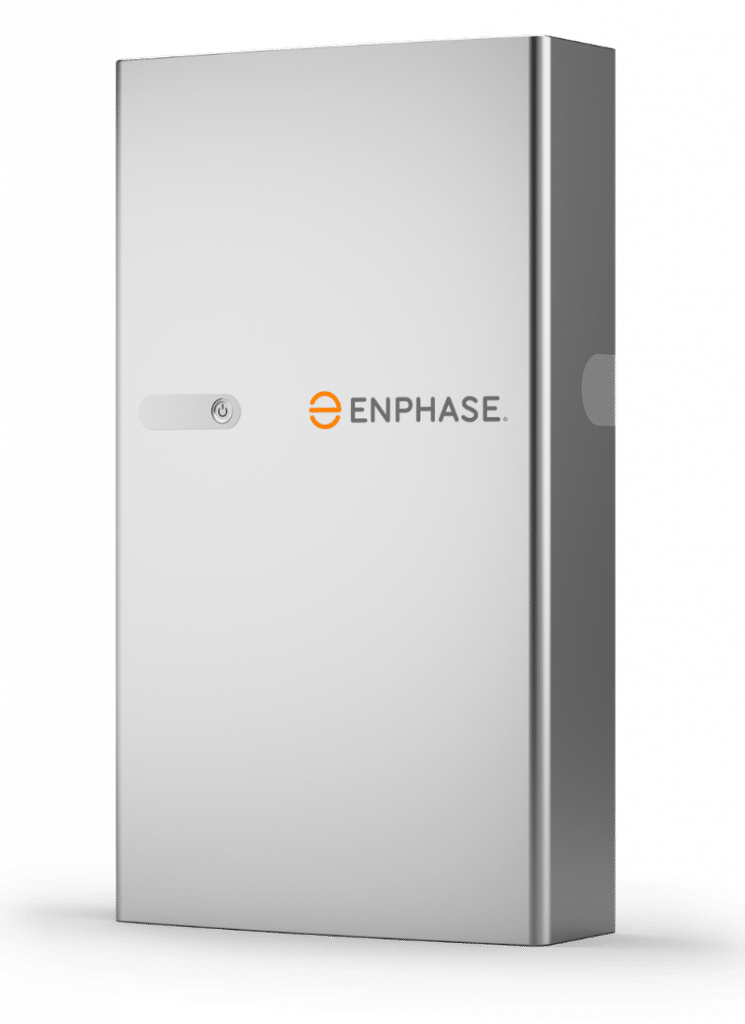
Enphase IQ Battery
Enphase Energy is the leading supplier of microinverter-based solar and battery systems that enable people to make, use, and save.
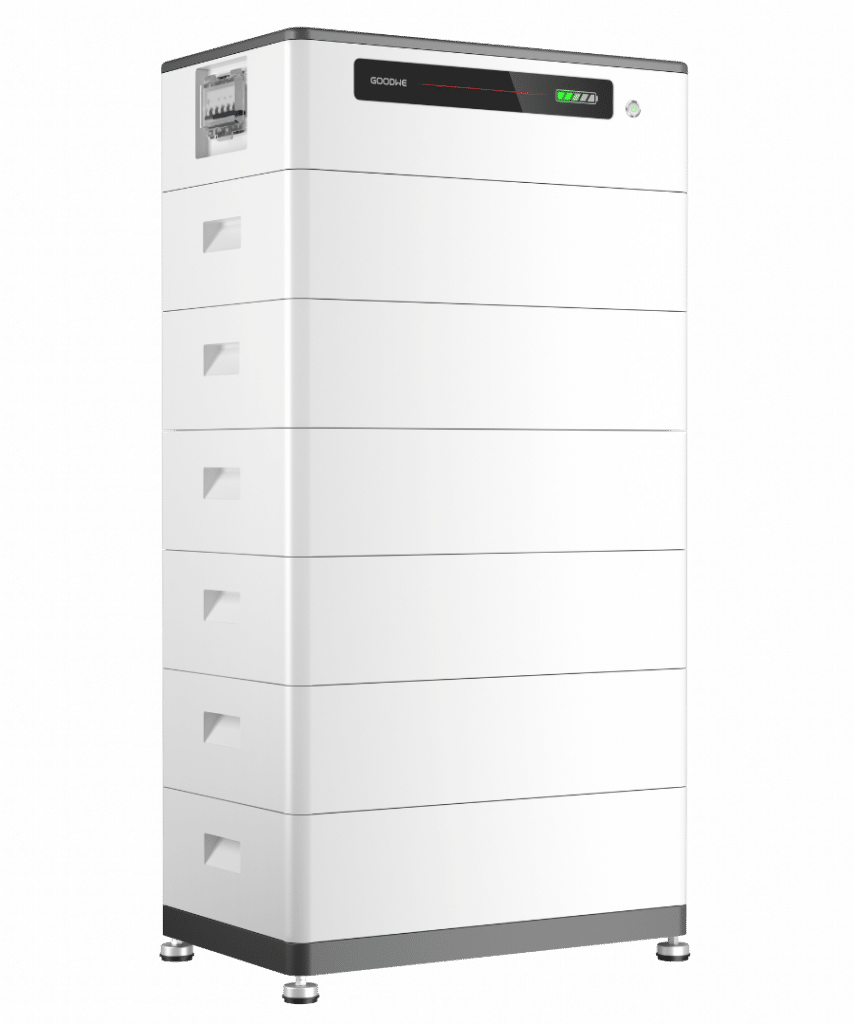
GoodWe
GoodWe provides residential and commercial-scale solar products that meet and exceed stringent quality standards. Solar solutions manufactured by GoodWe are residential and commercial inverters and batteries, hybrid inverters, monitoring systems, and EV chargers.
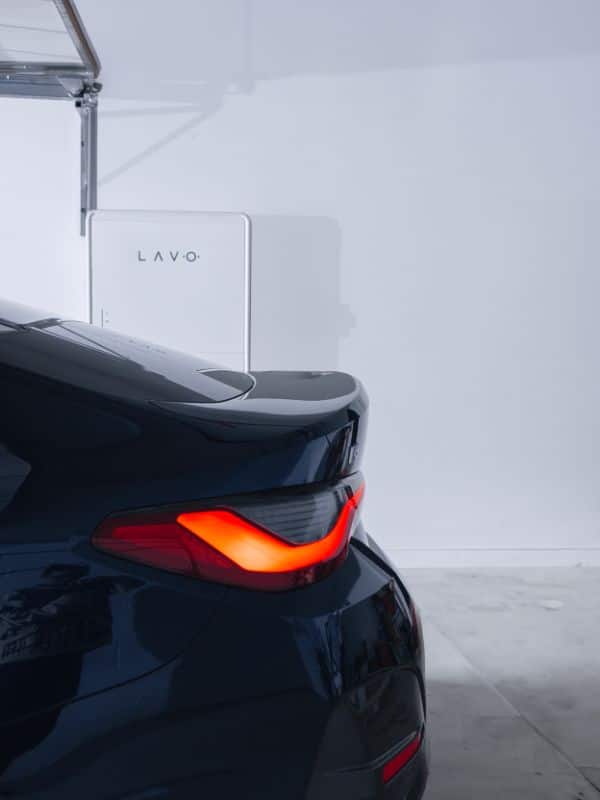
LAVO
LAVO, an Australian cleantech company, offers innovative solar battery storage solutions for homes in Australia. Their flagship product, LAVO Life, integrates seamlessly with solar panels to maximise self-consumption and reduce reliance on the grid. This all-in-one system boasts a compact design and long warranty and is built for the harsh Australian climate storage systems and a pioneer of technologies for a clean, decentralised and connected energy system.
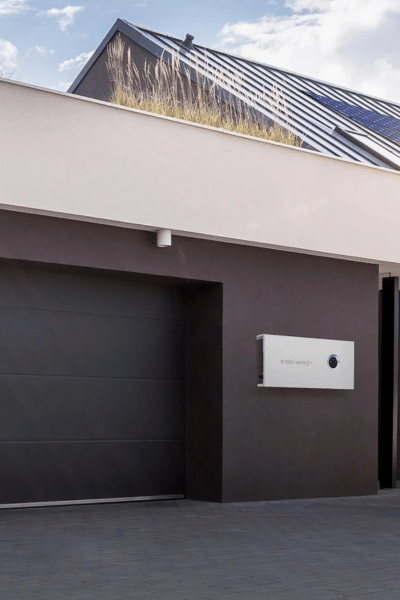
Sigenergy
Sigenergy, a new player in Australia’s solar energy market, offers a unique “all-in-one” solar battery storage solution. Their SigenStor system integrates solar panels, battery storage, and even bi-directional electric vehicle charging, all controlled by a smart AI system. This could be a game-changer for homeowners looking to maximise their solar power usage, reduce reliance on the grid, and even power their electric vehicles.

Solis
Solis offers a compelling solar battery storage solution for Australians seeking to maximise their home solar power systems. Their hybrid inverters boast industry-leading efficiency and come in a range suitable for residential needs. By adding Solis solar battery storage, homeowners can increase their self-consumption of solar energy, reduce reliance on the grid, and lower electricity bills.
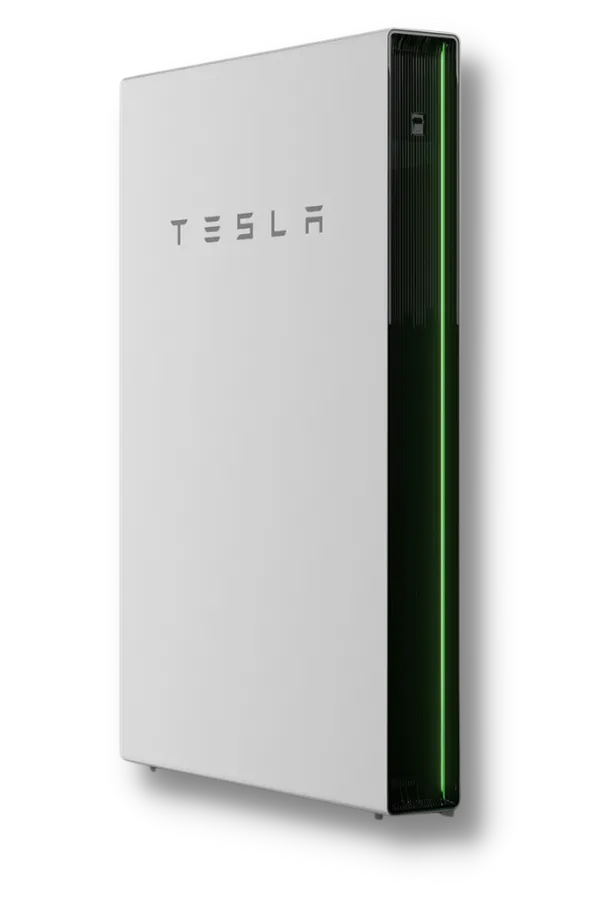
Tesla Powerwall
The Tesla Powerwall is one of the most popular solar batteries on the market. It has a high battery capacity, a long lifespan, and good round-trip efficiency.
Unleash the potential of solar battery storage! Are you ready to transform the way you power your business or household? Say goodbye to rising electricity costs and unpredictable energy grids. The state-of-the-art solar battery systems empower you to maximise energy efficiency, save money, and reduce your carbon footprint while enjoying an uninterrupted power supply.
Let us discuss and choose the best quote that suits your needs and budget, and we can connect you with our trusted local installers, who will provide up to 3 FREE solar quotes for your business solar and home battery system.
Different types of solar batteries
Lead-acid battery
The most common type of solar battery in Australia. They are relatively inexpensive and have a long lifespan, but they have a lower energy density than other types of batteries.
Lithium-ion battery
The most efficient type of solar battery available. They have a high energy density and can be recharged quickly, but they are also the most expensive type of battery.
Flow battery
This type of battery uses liquid electrolytes to store energy. They have a long lifespan and can be used for solar and wind power applications, but they are also the most expensive type of battery.
Nickel-cadmium battery
This type of battery uses liquid electrolytes to store energy. They have a long lifespan and can be used for solar and wind power applications, but they are also the most expensive type of battery.
Sodium nickel chloride battery
The newer battery type is still under development. They have the potential to be more efficient and less expensive than lithium-ion batteries, but they are not yet widely available.
What is a virtual power plant and what does it have to do with a solar battery?

A virtual power plant (VPP) is a network of distributed energy resources, such as homes with solar and battery systems, that are centrally managed to provide electricity to the grid. VPPs can help improve the grid’s stability, reduce reliance on fossil fuels, and provide financial benefits to participants.
In Australia, several VPPs are already operating, including the AGL Virtual Power Plant, the EnergyAustralia PowerResponse VPP, and the Solar Victoria VPP Pilot Program. These VPPs are helping to make Australia’s energy system more reliable, sustainable, and affordable.
If you are considering installing a solar battery in Australia, consider joining a VPP. This can help you maximise your battery’s benefits, such as reducing your electricity bills and helping stabilise the grid.
Here are some benefits of participating in a VPP in Australia:
- Reduce your electricity bills: By participating in a VPP, you can use your battery to store solar energy during the day and discharge it back into the grid at night, when electricity prices are higher. This can help you to reduce your electricity bills.
- Help stabilise the grid: VPPs can help stabilise the grid by providing backup power during peak demand or outages. This helps ensure that everyone has access to reliable electricity.
- Earn income: Some VPPs offer participants the opportunity to earn income by providing their battery storage to the grid. This can offset the cost of your battery.
Solar battery rebates and VPPs – making batteries more affordable at a cost
The cost of solar battery storage systems in Australia has steadily declined in recent years, but they are still a significant investment for many homeowners. Solar battery rebates and virtual power plants (VPPs) can help to make batteries more affordable, but they also come with some costs.
Solar rebates are government or utility incentives for a financial discount on purchasing a solar battery system. VPPs are groups of homes and businesses that connect their solar batteries and other distributed energy resources to the grid. VPP participants can earn money by providing services to the grid, such as storing energy during peak demand or providing backup power during outages.
Solar rebates and VPPs can make batteries more affordable, but they also come with some costs. Rebates may be limited to certain types of solar batteries or homeowners meeting certain eligibility criteria. VPP participants may be required to pay a monthly fee or to make their batteries available for grid services at certain times. Learn more about Solar Battery System Rebates, Subsidies, & Incentives.
Are you looking to save extra money with your Sungrow, GoodWe, or Tesla Powerwall 2 solar battery installed? Origin and Energy Matters have teamed up to provide customers with an additional way to save and make money!
FAQs | Frequently Asked Questions
Are solar batteries worth it in Australia?
In Australia, several key factors influence solar batteries’ value proposition. Firstly, the rising cost of electricity has made the self-consumption of solar energy more attractive, increasing the potential savings from solar battery storage. Secondly, Australia’s high sunshine hours and generous feed-in tariffs for excess solar energy can reduce the payback period for battery investments.
Despite these advantages, the upfront cost of solar batteries remains a significant barrier for many households. Additionally, the effectiveness of battery storage depends on individual energy consumption patterns. Those with high evening energy usage are more likely to benefit from solar battery storage than those with lower evening consumption.
Besides financial considerations, solar batteries offer several non-monetary benefits, such as enhancing energy independence during power outages and reducing reliance on the grid. They also contribute to a more sustainable energy future by maximising the utilisation of renewable solar power.
Overall, the decision of whether solar batteries are worth it for Australian households depends on a range of factors, including individual circumstances, financial considerations, and energy consumption patterns. Carefully evaluating these factors can help homeowners determine if a solar battery system aligns with their needs and budget.
How to choose solar battery size?
Choosing the right solar battery size for your Australian home can be daunting. There are many factors to consider, such as your household’s energy consumption, budget, and future energy needs.
- Household energy consumption: This is the most important factor when choosing a solar battery size. You can find your average daily energy consumption on your electricity bill. Once you know your average daily consumption, you can choose a battery that can store enough energy to power your home for at least one or two days.
- Budget: Solar batteries can range in price from a few thousand dollars to tens of thousands. It is important to set a budget before you start shopping for batteries.
- Future energy needs: If you plan on adding appliances or making other changes to your home that will increase your energy consumption, you will need to choose a large battery to meet your future needs.
As a general rule of thumb, a 10kWh battery is a good starting point for an average Australian household. However, you may need a larger battery with high energy consumption. Conversely, you can get away with a smaller battery with low energy consumption.
What size solar battery system do I need?
The size of the solar battery system you need in Australia will depend on a number of factors, including your average daily energy consumption, your desired level of self-sufficiency, and your budget.
- Average daily energy consumption: The first step is determining your daily energy consumption. You can do this by checking your electricity bills or using an online energy calculator. The average Australian household consumes around 18kWh of energy per day.
- Desired level of self-sufficiency: Once you know your average daily energy consumption, you can decide how much you want to rely on your solar battery system for your energy needs. If you want to be completely self-sufficient, you will need a larger battery system than if you are only interested in reducing your reliance on the grid.
- Budget: Solar battery systems can range in price from a few thousand dollars to tens of thousands. It is important to factor in your budget when deciding on the size of your system.
Generally, a battery system with a storage capacity 10kWh to 15kWh is a good starting point for most Australian households. This will allow you to store enough energy to cover your needs during the night and on cloudy days.
Here is a table that shows the recommended battery size for different household sizes:
Household size | Average daily energy consumption | Recommended battery size |
1-2 people | 10-15kWh | 10kWh |
3-4 people | 15-25kWh | 15kWh |
5 or more people | 25-35kWh | 20kWh |
Of course, these are just general guidelines. The best way to determine the right size battery system for your needs is to consult a qualified solar installer.
- Solar Battery Storage Systems – A Complete Guide
- Solar Battery Systems & Home Solar Energy Storage
- How Long Do Solar Storage Batteries Last in 2023?
- Best Solar Battery Australia 2023
- Solar Batteries in Winter – Functionality & Maintenance
- Indoor vs Outdoor – Where to Install Your Solar Battery
- What Size Battery Do I Need For My Solar System?
Ready to go solar? Get an instant assessment
To find out how much a solar system with storage or even an EV charger will cost, try our easy-to-use solar power and battery storage calculator! It will generate performance data and possible cost savings.
We can forward your information to 3 trusted local installers in your area to obtain free, no-obligation solar quotes.
Find out how much you can expect to pay for solar
Ready to find out more? Get FREE quotes for solar, batteries + more
*Prices quoted are to be used as a guide only and do not factor in state and other rebates and incentives. Includes STC discount.












